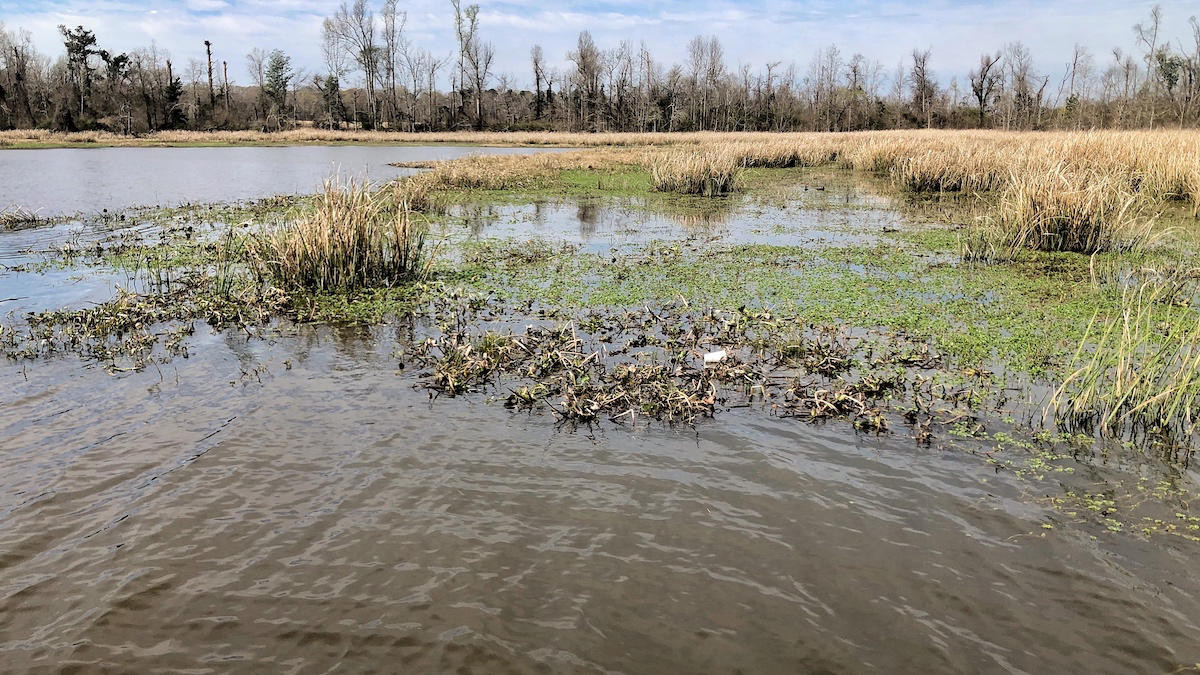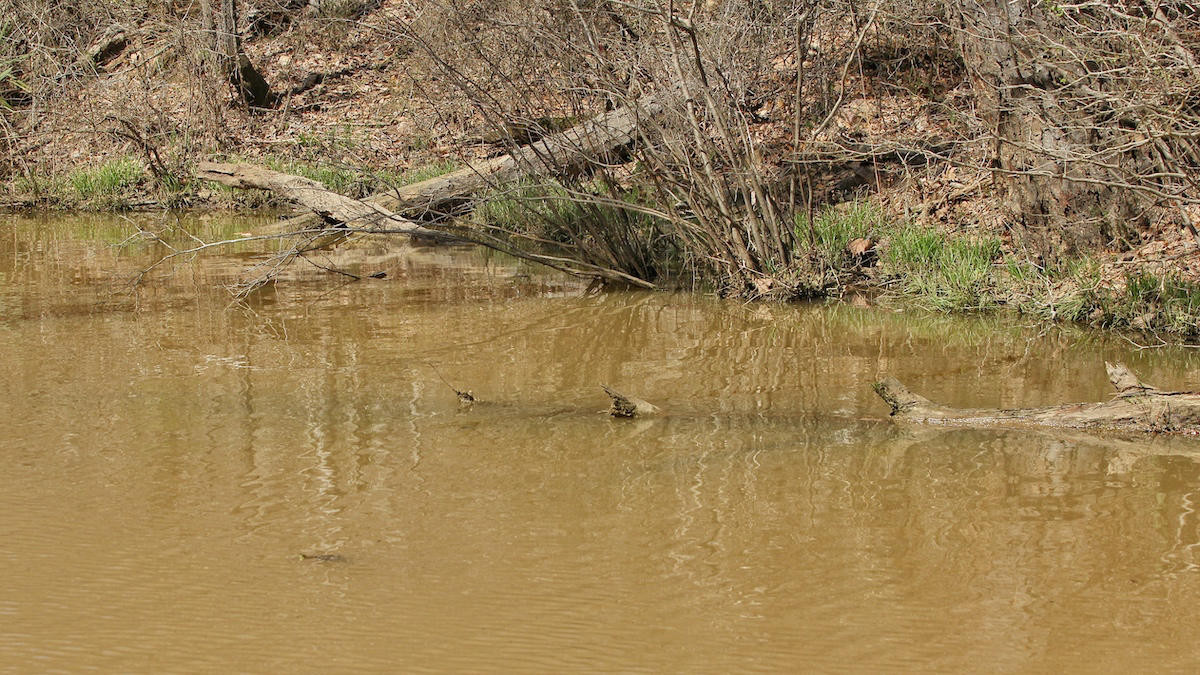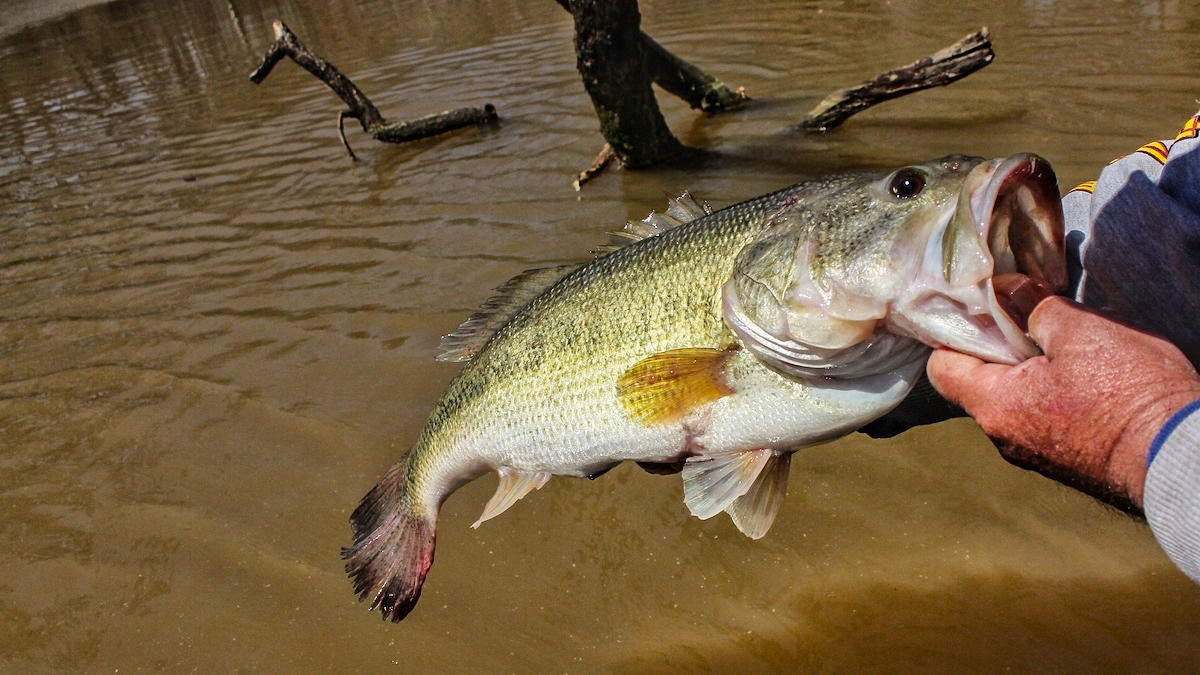Largemouth bass are very predictable creatures. They need only a few things to survive and thrive with cover, food and optimal water temps being three big factors. By seeking these things out, as anglers we can constantly increase our odds. Bass are cold blooded, so they become more active in warmer water in the winter and cooler water in the summer. If we look for the bait, we’ll typically find the bass. And though fish can certainly suspend and roam around, finding cover usually gives us a better chance to get bit.
But what about when there’s too much cover? Or maybe not too much per se, but instead multiple types and pieces of cover to choose from. That’s when you have to know how to prioritize it. Ask yourself, “How do I make the most of the cover available without wasting any opportunities?”
That’s what we’re going to talk about today.

Don’t get ahead of yourself
One of the hardest things to do in fishing is to see that perfect piece of cover where you just know you’re about to get a bite and not throw to it right away. But quite often, that restraint will lead to more bites.
Here’s an example of this: Say you’re pulling up to a grass bed and you see a hole 40 feet over in the grass that looks perfect to catch one on a frog.
If you just pull right up to the edge, bomb a frog back in there and get bit, you’re about to disturb all the other water between you and that fish by dragging it out, kicking and sloshing all the way. And you’re likely to throw backwash all along the edge of the grass with the trolling motor trying to get into position to make that cast. Instead, if you maintain eye discipline and don’t get tempted into throwing at that best piece of cover first, you’ll often times catch a fish or two flipping or frogging the edge and then also catch that one from back in the mat.
Similarly, you can look a the same concept when fishing a stumpy point or flat where several stumps are scattered around at different distances from the boat. It’s important to pick apart those stumps in order of the nearest. If you instead cast over a few and then hook a fish and pull it over some of those other stumps, you’re potentially spooking fish you could have caught. You also run the risk of hanging one of the back stumps and then having to disturb those outer stumps with the trolling motor going to get your bait.

Seek out the right combination
That being said, there are times where something like the opposite will apply as well. Situations where there’s an overabundance of one type of cover and scattered additional cover mixed in. Sometimes, when you’re not getting bit fishing that abundant cover, it’s all about seeking out that combo and focusing on it.
An example of this would be a piece of wood along a hard edge of water willow. I see this all the time on some of our local fisheries in Alabama. I’ll be fishing down the hard edge of the grass not getting bit and then anytime I come to a stump, stick or log in the grass, I’ll get a bite. So I begin to focus on that pattern. Instead of worrying about fishing every blade of grass, I’ll kick the trolling motor up on high and cover water. Then as soon as I get within striking distance of a piece of wood, I may even skip over a little of the grass to throw a good clean cast at that cover combination first.
The same concept applies when fishing a lily pad field with scattered mats of hyacinth or clumps of reeds. Now, there have been times where I’ll fish the pads and get bit at random. But there there are times too where the bass want that combination of cover. They’re in the pad field, but trying to bed so they want their back to that clump of reeds. Or they’re pre- or post-spawn and want to tuck their eyes under a mat.

Pick the highest percentage
You’ll also find yourself at times having to pick between two equally enticing opportunities; a situation where neither piece of cover is that much more likely to hold a bass than the other. But still, there’s often some factor that will prioritize one piece of cover over the other.
A pine tree laying directly beside a hardwood is a good example of this. Both are likely to hold a fish, but even if I come to the pine slightly before the hardwood, I’ll go ahead and throw to the hardwood first.
Why? Because the hardwood is less likely to hang. Fishing line, especially braided line, which I personally like to throw a lot around cover, is notorious for digging into the coarse bark of a pine tree. So since I’m more likely to hang my bait up in the pine and then disturb both pieces of cover by going to retrieve my bait, I’ll just fish the hardwood first and then move to the pine once I’m done.
Similarly, if I’m fishing docks I’ll typically pitch to the poles of the dock before trying to skip under it. Even though I catch most of my fishing getting my bait back under a dock, I also realize there’s a risk of banging my bait off the dock on a bad cast and sounding the alarm for every fish in the vicinity. Instead, by casting to the lower-hanging fruit of the dock I stand a better chance of catching a fish before it even knows I’m there. Then, if I don’t get bit or even if I do, I’ll skip the dock before I leave.

Final thoughts
Prioritizing cover can and will greatly increase your productivity on the water. Not only will it prevent you from disturbing fish in pursuit of others, but it will also help you develop patterns much quicker. Focusing on the exact pieces of cover that you’re getting bit on in a cover rich environment will open your eyes to all the patterns around you.
Suddenly you’ll be able to look around and not just see “grass” everywhere, but instead start to pick out hyacinth, hydrilla, pencil reeds and arrow heads. When I first went to Okeechobee for instance, it looked like I could get a bite just about anywhere. I’d stay on the trolling motor for hours just casting at everything. It wasn’t until I started getting bit and focusing on where those bites were coming from that I was able to really prioritize the cover and seek out those higher percentage places. To the point where I could run around on the big motor and pick out productive areas at 40 miles per hour.
Learning what to look for in situations where there’s an overabundance of cover is key. But then making the most of that cover is critical as well. Don’t get ahead of yourself and disturb one fish in pursuit of another when you could have caught both. Always look at two pieces of cover with an intent eye and you’ll find something that sets them apart and makes one either a better opportunity or at least less of a risk. Prioritizing cover is a thought process where you’re constantly having to run numbers, and it’s one that you will constantly improve at as you catch another fish and add new data. If you approach cover with this mindset, you’ll become a better angler each time you hit the water.












